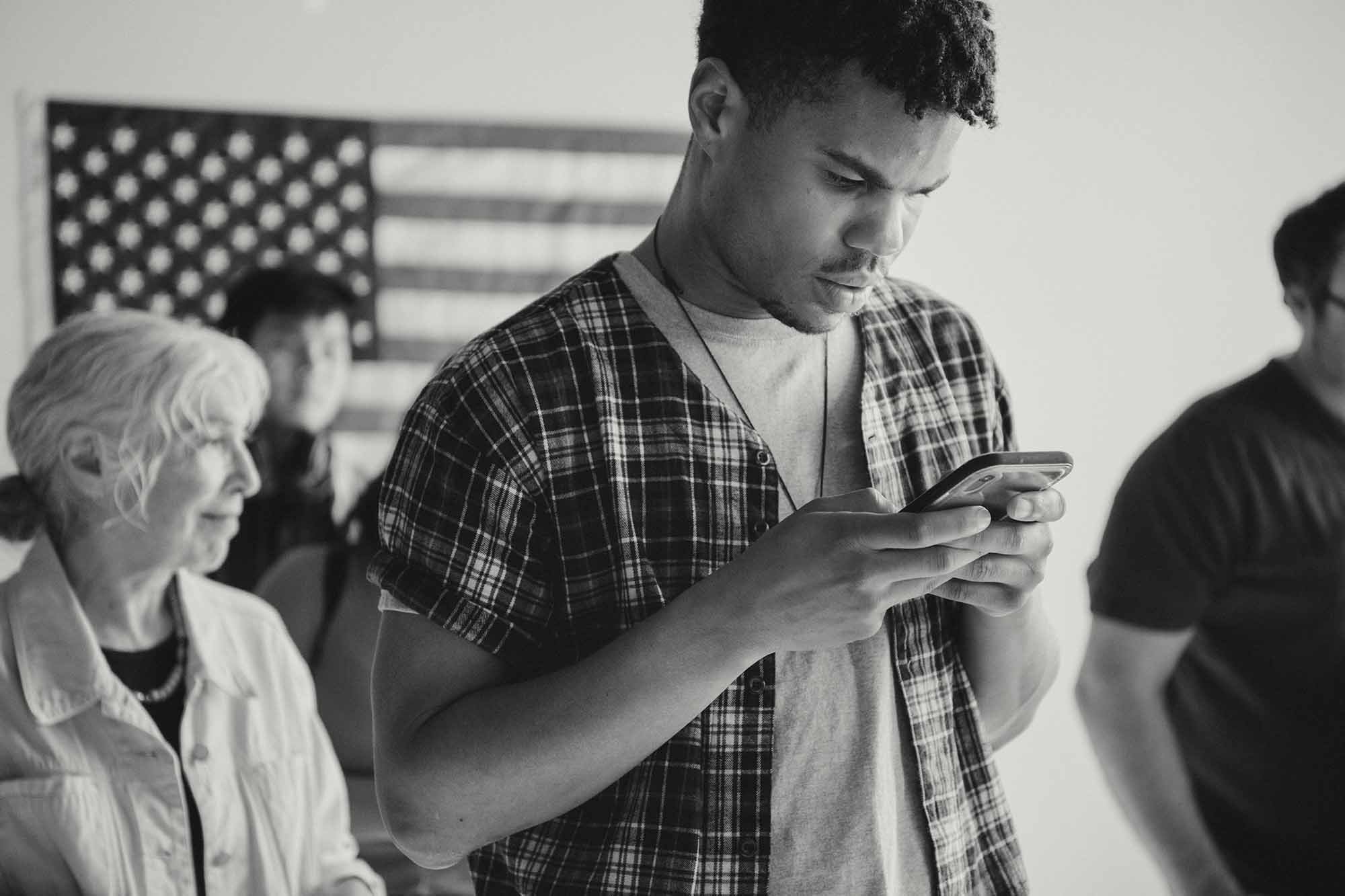
OUR THEORY OF CHANGE
THERE HAS TO BE A BETTER WAY.
The Situation
When we founded the institute in 2007, it was already obvious election technology infrastructure in all democracies, and particularly the United States, had been allowed to deteriorate to the point that its inherent security problems, runaway costs, and terrible usability were adding up to a democracy administration crisis. Today, when combined with partisan paralysis over solutions, plus a lack of any commercial incentive to remedy this, the ways and means of administering elections has become a dire threat to the stability of democracy. Solving this has become a moral imperative.
We believe code causes change and transparency builds trust. So, let's examine how we believe we can have massively scalable impact – this is our theory of change.
The Required Change
Election technology, a backwater of government I.T., must be re-invented to increase security, lower costs, upgrade usability and above all, improve resilience for a digital, highly mobile society where constitutionally mandated elections must withstand catastrophic disruptions.
This requires producing a new technology infrastructure that can support a sensible migration from existing obsolete systems as they reach their point of required replacement, to a verifiable, accurate, secure and transparent alternative.
To address this, we’re building ElectOS™, a completely redesigned election administration technology framework. We characterize it that way because it has dozens of modules, innovating everything from voter registration, to ballot design, generation, and distribution, to vote tabulation and reporting, that make for a complete whole.
The "change agent" is public technology; that is, open-source—available for assessment, audit, peer-review, and free to implement by any jurisdiction through a commercial delivery vendor chosen through competitive bidding.
The Institute will be looked to for technical consultation, like any large-scale open-source technology project such as Android® (for mobile devices) or Linux® (for enterprise computing). Of course, code curation and technical support are important means to ensure widespread adoption.
The only way to ensure that future election administration and voting systems are truly verifiable, accurate, secure, transparent, cost effective, highly usable, and fully accessible is to take this burden off the shoulders of governments that cannot, and commercial industry that will not. In absence of great action in this regard, the status quo will persist and undoubtedly lead our nation — and likely other countries — to a constitutional catastrophe.
Our Theory of Change
We believe the best and only way to bring about that change is through a public digital works project to deliver that public benefit technology. And that is our charter.
To do so requires addressing and solving for 8 interconnected problems that are driving this crisis of democracy administration:
Inherent design flaws in relying on commodity PC hardware for election technology design due to…
A lack of security-centric engineering principles that are exacerbated by...
Incapable legacy vendors that lack core technology design competence resulting in...
Obsolete systems requiring cyber-security triage in a digital arms race dependent on...
Contracts to guarantee spare parts in an insecure supply chain aggravating...
Partisan fights for funding in light of critical infrastructure designation leading to...
Slow progress on design guideline updates which all is driving a...
Complete lack of commercial incentive for industry to solve this on its own.
So, our theory of change provides in 8 parts over time that:
The only way to resolve this democracy crisis is to make the necessary technology innovations publicly available (not commercially proprietary) because it is very unlikely the government or industry can or will do so on its own. Thus, what’s required is a non-profit digital public works project bringing together the best and the brightest in high assurance digital engineering to produce that technology, which will result in the required infrastructure of 21st century election administration.
Said simply, change starts with a public digital works project—the TrustTheVote Project.This open source technology will accelerate development of new federal certification processes, voluntary design guidelines, and finalize open data standards because it provides the missing “reference implementation” which exhibits our principle that “code causes change.”
Thus, public technology is a catalyst for open standards, and better certification processes.The unencumbered availability of this new public technology will catalyze more secure, lower cost, and far better voting systems because it lowers barriers to new entrants, lowers the taxpayer cost to acquire new alternative solutions, and improves the performance of the marketplace for this technology.
In short, public technology drives new products, solutions, and vendors.Introduction of new systems based on this public technology will increase confidence in elections and their outcomes by virtue of open standards, open data, and open source of the underlying technology, wherein transparency is an imperative ingredient of trust.
Simply put, public technology increases transparency, and transparency builds trust.Widespread adoption of this new, lower cost, easier to use, far more secure election administration and voting technology will improve the performance of elections ensuring they are more verifiable, accurate, secure, and transparent in process than ever before.
As adoption accelerates and spreads, elections perform better and are more trustworthy.More trustworthy elections will significantly improve the operational stability of democracy administration (and correspondingly, the administration of elections).
As reliability and trustworthiness improve, attacks on election integrity are averted.Stability of election administration will catalyze further innovations leading to even easier, more convenient, dare we say delightful participation experiences for both election administrators and voters alike.
The new election infrastructure broadens enfranchisement for the entire electorate.Operational stability, through more secure, reliable, and trustworthy elections, will result in far greater participation and a near impenetrable defense of democracy.
Easy, convenient, reliable, and trustworthy elections energize and expand participation.
The full 6-page essay on our theory of change can be read here.

